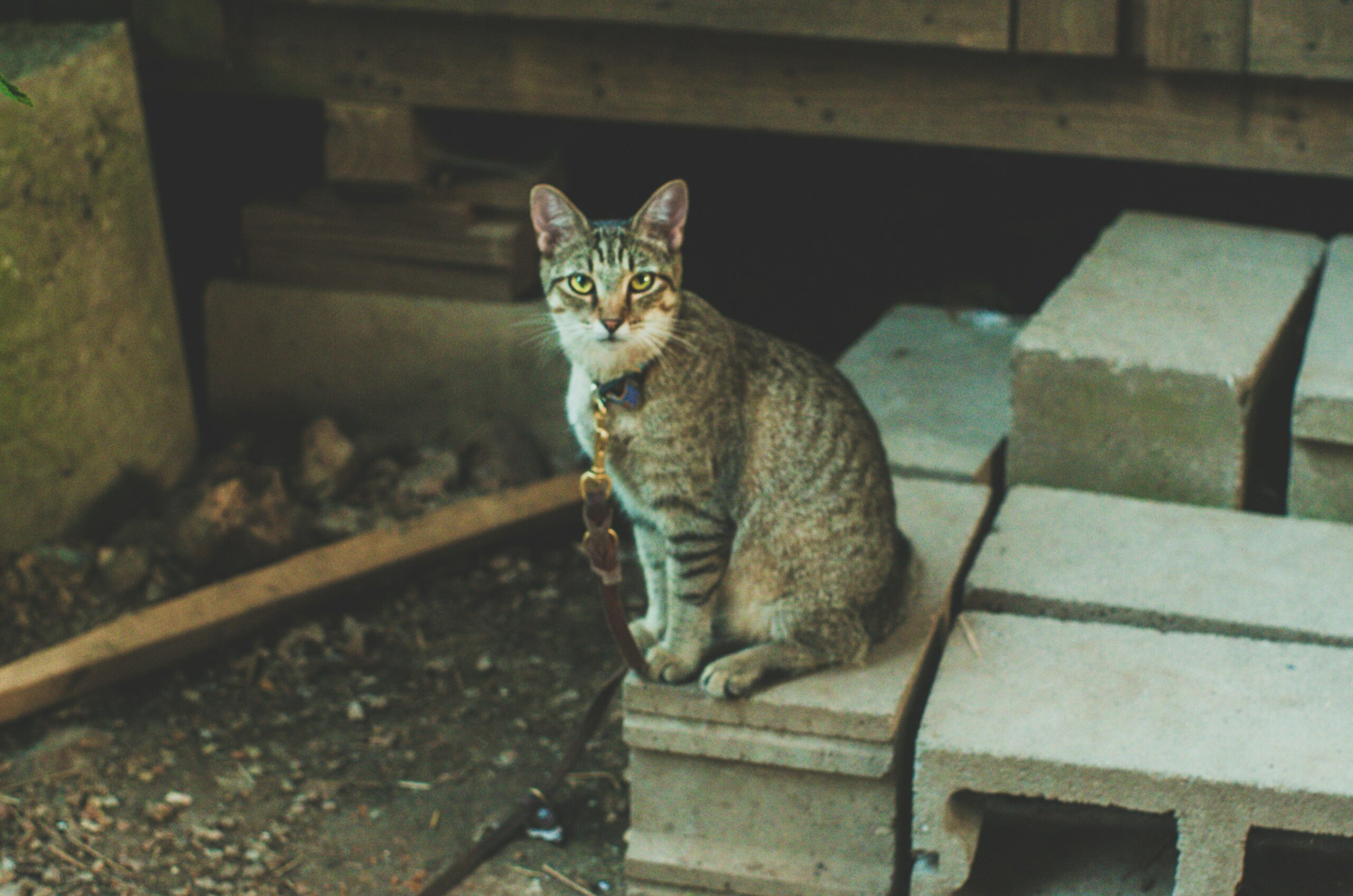How to Train Your Cat: Effective Techniques for a Well-Behaved Feline
Introduction to Cat Training
Cat training is often perceived as an arduous or even futile endeavor due to the independent nature of felines. However, the practice of training your cat can yield significant benefits, enhancing communication between you and your feline companion and contributing to a more harmonious household environment. Training is an essential aspect of the feline-human relationship that can lead to improved behavior and a deeper bond.
One of the primary advantages of training is the establishment of clear communication pathways between you and your cat. Through training, cats learn to understand various commands and cues, allowing them to coexist smoothly with their human families. Whether it involves teaching them to use a litter box reliably or discouraging destructive behaviors like scratching furniture, training facilitates a mutually beneficial understanding.
Creating a harmonious household is another compelling reason to invest time in training your cat. Well-behaved cats are less likely to engage in problematic behaviors, reducing the potential sources of stress for both the owner and the pet. By establishing routine and discipline, training ensures that cats feel secure and confident within their environment, contributing to their overall well-being.
It is also noteworthy to address some common myths surrounding cat training. Contrary to popular belief, cats can indeed be trained effectively. While they might not exhibit the same eagerness to please as dogs, cats respond well to positive reinforcement techniques. Misconceptions about cat training often stem from a lack of understanding about feline behavior and psychology. Dispelling these myths opens up the possibility for cat owners to engage more actively in their pets’ behavioral development.
In summary, the concept of training your cat is not only feasible but also highly beneficial. It fosters a better relationship between you and your feline, reduces behavioral issues, and cultivates a more peaceful household. Understanding the importance of cat training sets the foundation for exploring effective techniques that can lead to a well-behaved and happy feline companion.
Understanding Feline Behavior
To effectively train your cat, it is essential to first grasp the fundamentals of feline behavior. Cats are complex creatures with unique instincts and behavioral traits that significantly influence their actions. By understanding these traits, pet owners can create a more harmonious living environment and better address behavioral challenges.
One of the most prominent aspects of feline behavior is their hunting instinct. Cats are natural predators, and this drives many of their actions, from pouncing on toys to stalking shadows. This instinct is deeply ingrained and is not limited to outdoor cats. Indoor cats will often display hunting behaviors through play. Recognizing this natural tendency and providing outlets such as interactive toys can fulfill these instincts and reduce undesirable behaviors.
Territoriality is another key component of a cat’s behavior. Cats are highly territorial animals and often mark their territory through various means, such as scratching or spraying. Understanding that this behavior is rooted in their need to establish and maintain a territory can help in creating a cat-friendly home. Providing scratching posts and ensuring that each cat in a multi-cat household has its own space can alleviate tensions and promote harmony.
Social structures in the feline world can differ significantly from those of humans and other pets. Cats are generally solitary animals, but they do form social bonds, particularly in environments where resources are abundant. Recognizing the subtle signs of a cat’s social dynamics, such as grooming, playing, and vocalizations, can provide insights into their needs and feelings. This knowledge is crucial in addressing social behavior issues and fostering a positive relationship with your cat.
In conclusion, understanding these core behaviors—hunting, territoriality, and social structures—offers valuable insight into why cats act the way they do. By leveraging this knowledge, cat owners can develop more effective training techniques and create a more enriching environment for their felines.
Positive Reinforcement Techniques
Positive reinforcement is a powerful and humane approach to cat training, based on rewarding desired behaviors rather than punishing undesired ones. This method leverages the natural tendencies of cats, ensuring they are motivated and engaged in the learning process. Rewarding a cat with treats, verbal praises, or play when they exhibit good behavior fosters a positive association with that behavior, making it more likely to be repeated.
One of the most effective techniques is using treats as rewards. For instance, if your cat uses the scratching post instead of the furniture, rewarding them with a treat immediately reinforces the desired behavior. Timing is crucial in this method; the reward should be given immediately following the behavior you want to reinforce. This helps the cat make the connection between the action and the positive outcome.
Verbal praise can also be a powerful reinforcement tool. Cats may not understand the specific words, but they respond to the tone of your voice. A cheerful and enthusiastic tone when your cat performs a desirable action can be very effective. For example, if your cat sits quietly while being groomed, offering a “Good kitty!” in an upbeat tone can reinforce that calm behavior.
Integrating play as a reward is another excellent technique. Many cats are driven by their play instincts, and using this to your advantage can lead to successful training sessions. If your cat follows a command, such as coming when called, a session with their favorite toy can serve as a highly motivating reward. This method also provides additional physical and mental stimulation, which is beneficial for overall feline well-being.
Positive reinforcement can be applied in various situations. Training a cat to use the litter box, for example, can be made more effective by rewarding them with treats or praise each time they use it correctly. Similarly, if you are trying to train your cat to respond to their name, offering a small reward each time they come to you when called can greatly expedite the learning process.
In essence, positive reinforcement techniques focus on encouraging and strengthening desirable behaviors through rewards, creating a more cooperative and well-behaved feline companion.
Basic Commands and Tricks
Teaching basic commands and tricks to your cat not only enhances their behavior but also strengthens the bond between you and your feline friend. Unlike dogs, cats can be somewhat more challenging to train, but with patience and the right techniques, your cat can learn various commands and tricks.
Sit: Start by holding a treat close to your cat’s nose. Gradually lift the treat over their head; as their head follows the treat, their bottom will naturally lower to the ground. As soon as your cat sits, say “Sit” and give them the treat. Repeat this process several times a day in short, 5-10 minute sessions.
Stay: Once your cat has mastered sitting on command, you can teach them to stay. Begin by asking your cat to sit. Once seated, show them your hand with the palm facing them and say “Stay.” Take a step back while maintaining eye contact. If your cat stays put, reward them with a treat and praise. Gradually increase the distance and time you expect your cat to stay before giving the treat.
Come: This command can be particularly useful for cats that tend to wander. Choose a consistent cue, like a whistle or call their name. Start in a familiar and quiet environment. Show your cat a treat, say “Come,” and encourage them to move toward you with the cue. Reward them immediately when they reach you. Practice in various settings to solidify the command.
High-five: Begin by having your cat sit. Hold a treat in your closed fist and let your cat sniff it. Gradually lift your hand slightly higher, and when your cat lifts their paw to reach the treat, say “High-five” and open your hand to give the treat. Consistent repetition will help your cat associate the paw lift with the high-five command.
The key to successful training is consistency, patience, and positive reinforcement. Keep training sessions short to hold your cat’s attention, and always reward desired behaviors with treats and praise. Over time, your cat will not only understand these commands but will look forward to these training sessions as a fun and engaging activity.
Litter Training
Litter training is an essential aspect of raising a well-behaved cat. The initial step in this process is selecting the right litter box. Opt for a sizable box to ensure your cat has enough space to move around comfortably. An open litter box can be a practical choice, allowing for easy access. Alternatively, enclosed boxes offer a degree of privacy, potentially making your cat feel more secure.
The type of litter you choose also plays a significant role. Clumping cat litter simplifies cleaning by making it easy to scoop out waste, whereas non-clumping litter tends to be more affordable but requires more frequent changes. Some cats may prefer unscented litter, as strong fragrances can be off-putting. Experimenting with different types may help you discover your cat’s preference.
Placement of the litter box is another critical factor. Choose a quiet, low-traffic area that offers some privacy, yet is easily accessible. Avoid placing the box near noisy appliances or in busy walkways. If you have multiple cats, having one litter box per cat, plus one extra, can help prevent territorial disputes and promote frequent usage.
Encouraging your cat to use the litter box involves positive reinforcement. Every time your cat uses the box, praise them and possibly offer a treat. Consistency is key; refrain from changing the box’s location unless absolutely necessary. If you must move it, do so gradually over several days to avoid confusing your cat.
Common issues such as marking or avoiding the litter box can arise. Address these by ensuring the litter box is kept clean, as a dirty box can deter use. For marking, understanding and managing stressors in your cat’s environment is crucial. Persistent problems should prompt a visit to the veterinarian to rule out any underlying health issues.
Avoiding and Correcting Undesirable Behaviors
Training your cat to avoid undesirable behaviors is crucial for a harmonious household. Common problematic behaviors include scratching furniture, excessive meowing, and aggression. Each of these issues requires careful attention to both prevention and correction.
Scratching furniture is a typical feline behavior, often rooted in their need to sharpen claws and mark territory. To deter this, provide appropriate scratching posts or pads strategically placed near the areas they frequent. Covering furniture with double-sided tape or using furniture protectors can also discourage this habit. Consistent and positive reinforcement, like offering treats when they use the scratching post, can help reshape their behavior.
Excessive meowing can be indicative of various underlying issues such as hunger, illness, or the need for attention. Determine the cause by ensuring your cat is healthy and well-fed. Interactive toys and scheduled playtimes can alleviate boredom, which is a common cause of incessant vocalizations. Training techniques, such as ignoring the meowing when it’s attention-seeking, can also be effective in curbing this behavior.
Aggression in cats can stem from fear, territorial disputes, or lack of socialization. Identifying triggers is essential. Avoid situations that provoke aggression and provide safe spaces for your cat to retreat. Gradual exposure to new surroundings or other animals, along with positive reinforcement, can help mitigate aggressive tendencies. In severe cases, consulting a veterinarian or a professional feline behaviorist might be necessary to address underlying anxiety or stress-related issues.
It is important to understand that undesirable behaviors in cats often arise from boredom or stress. Engaging your cat with regular play, providing enriching environments, and maintaining a consistent routine can prevent many behavior problems before they start. Addressing these issues early enables a more pleasant experience for both you and your feline companion, ultimately leading to a happier, well-adjusted pet.
Enrichment and Mental Stimulation
Ensuring your cat receives adequate mental stimulation and physical exercise is a fundamental aspect of any effective training regime. A well-engaged feline is less likely to exhibit destructive behaviors that arise from boredom, such as scratching furniture or incessant meowing. To achieve this, incorporating a variety of enrichment activities is crucial.
Interactive play is one of the most effective ways to stimulate your cat both mentally and physically. Toys that mimic the movements of prey, such as feather wands and laser pointers, encourage your cat to engage in natural hunting behaviors. Regular, scheduled play sessions not only satisfy their predatory instincts but also offer an opportunity for bonding and positive reinforcement.
In addition to interactive play, providing puzzle toys and food-dispensing devices can help keep your cat’s mind sharp. These toys require problem-solving and can occupy your cat for extended periods, helping to mitigate boredom-induced issues. Rotating these toys weekly can prevent monotony and maintain high levels of engagement.
Environmental enrichment is another critical component. Creating a stimulating environment can involve simple changes such as adding perches and cat trees that offer elevated views, which cats intrinsically enjoy. Window perches that provide an opportunity for bird-watching can also serve as excellent mental stimuli.
Furthermore, by introducing new scents and objects into their environment, you can keep your feline friend mentally engaged. Catnip, valerian root, and silvervine can be sprinkled on toys or scratching posts to offer new and exciting experiences. Swapping out or rearranging furniture and cat trees periodically can also help keep their environment dynamic and interesting.
Lastly, social interaction plays a vital role in enrichment. Providing opportunities for your cat to interact with you and other pets can significantly enhance their mental wellbeing. Group play sessions, training exercises involving treats, and even gentle grooming can forge stronger emotional bonds and keep your cat mentally stimulated.
Consistency and Patience in Training
Training a cat is a process that hinges heavily on two key principles: consistency and patience. These attributes are fundamental in helping your feline companion learn and adapt to the desired behaviors effectively. It is essential to remember that each cat is unique, with its own personality and pace of learning. Therefore, being consistent with your training methods and maintaining patience throughout the journey can significantly impact the success rate of your training efforts.
Firstly, consistency in training involves using the same cues, commands, and reinforcement techniques each time you interact with your cat. This repetitive pattern assists in creating a clear and predictable environment where your feline can understand what is expected of them. For instance, if you are teaching your cat to sit, use the same word and hand gesture consistently. The reliability of your actions helps in avoiding confusion and reinforcing the learned behavior.
Patience is equally vital. Training a cat is not an overnight task; it takes time, often weeks or even months, to notice substantial progress. It is important to celebrate small victories and not get discouraged by setbacks or slow progress. Recognize that your cat is not intentionally being difficult but is simply learning at their own pace. Offering positive reinforcement, such as treats, praise, or affection when your cat responds correctly, can help accelerate their learning curve.
A crucial tip is to make the training sessions short and engaging. Cats have relatively short attention spans, and long, monotonous sessions can lead to frustration for both you and your cat. Aim for multiple short sessions throughout the day, focusing on one behavior at a time. Additionally, always end training on a positive note to leave your cat looking forward to the next session.
Lastly, it is essential to maintain a calm and encouraging demeanor. Cats can sense frustration and negativity, which can hinder their learning process. By staying positive and patient, you are creating a supportive atmosphere conducive to successful training. Remember, the goal is to build a trusting relationship with your feline friend, and with consistency and patience, you will achieve a well-behaved cat in due time.















Post Comment